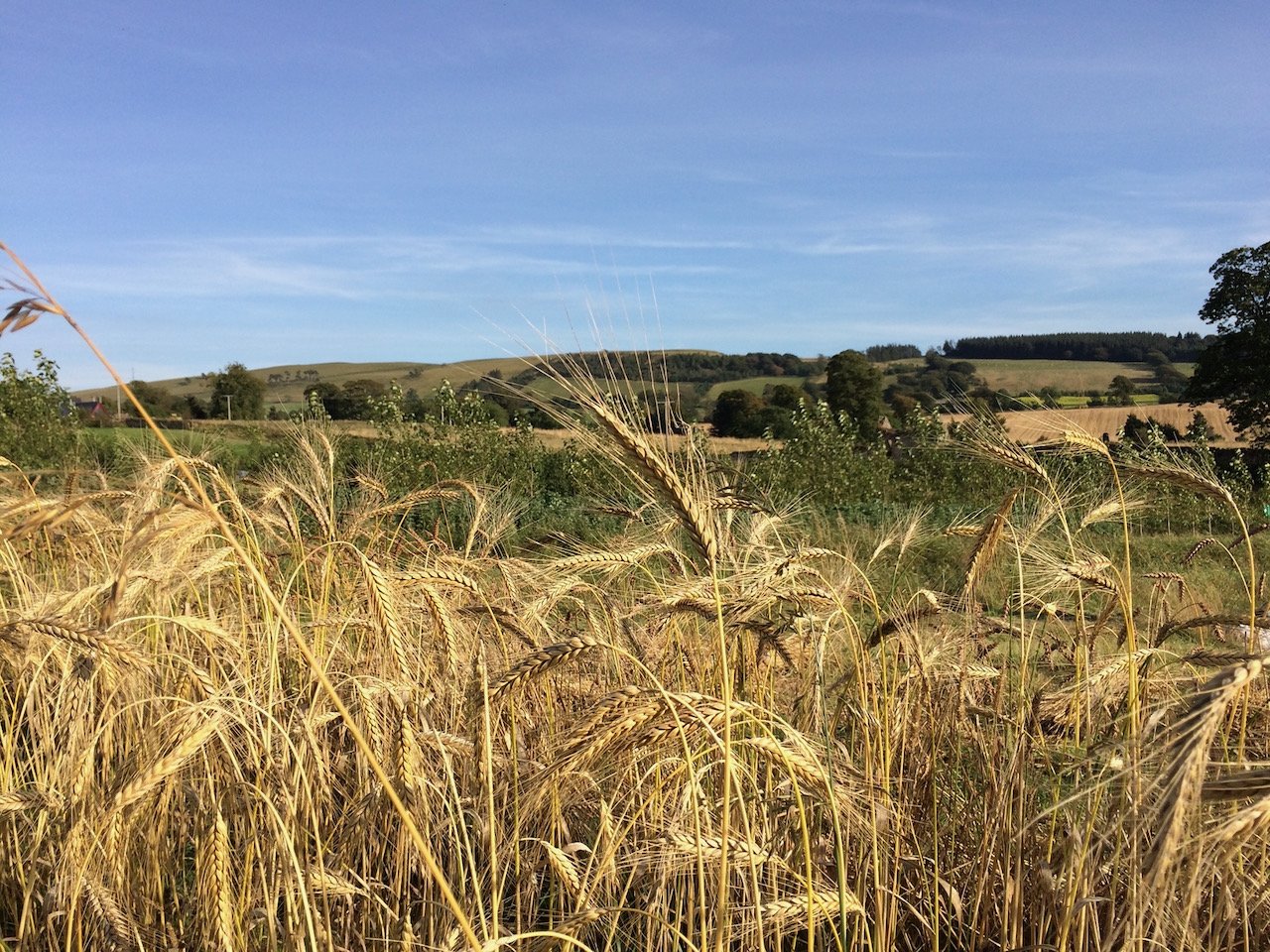Scotland the Bread
Emmer wheat from Slovenia at Macbiehill 2015
Andrew Whitley writes about re-building a healthy, local grain and bread supply.
Local food-lovers celebrate spring as a time when the first green shoots of a new season appear in woodland, hedgerow, garden and, if we’re lucky, on our plates. It’s well accepted that the more diverse our diet is the better it supports good health, both mental and physical. But what about our bread? The apparent variety of loaves on offer in supermarkets and specialist bakeries belies the ultra-uniformity of the grain they are made with. The wheat that goes into almost all Scottish bread is not grown in Scotland at all. It comes from intensive farms in other parts of the UK or abroad, where nothing grows in a wheat field except billions of clones of the same wheat plant, hybridised for high yield and predictable performance. The resilience, flavour and health that are supported by diversity are not even on the agenda of today’s industrial wheat breeders.
Some of us are trying to change this joyless (albeit very ‘efficient’) system. And as the spring sun warms the soil of Scotland The Bread’s trial plot behind Bowhouse on the Balcaskie Estate in Fife, one of the many mixtures, landraces and ‘populations’ of wheat, rye, spelt, emmer, oats and barley that we’ll be sowing is, fittingly, called “Joyeux Mélange”. Antoine Marin, an agroecologist from the French research organisation INRA, kindly supplied some seed for us to test last year, along with a list of the 88 varieties in the very diverse mixture. I was delighted to see that among the exotic names of wheats from places as far part as Afghanistan and Finland (and even the Congo) there were two bearing the name of ‘Shireff’ (sic). These were most probably bred by Patrick Shirreff at his East Lothian farm (Mungoswells) in the 1850s. His wheats travelled far and wide from the Haddington Corn Exchange, often in the bags of migrant Scottish farmers trying their fortunes in the ‘new world’ of Canada, Australia and New Zealand.
The Joyeux Mélange isn’t Scotland The Bread’s only French connection. When we started out to re-build a healthy local grain and bread supply a few years ago, among the very few supposedly Scottish wheat varieties listed in international gene banks was one called ‘Rouge d’Ecosse’. This, it turned out, was a traditional variety known as ‘Blood Red’ that had been sent from Edinburgh to the trial grounds of the famous French seedsman Henri Vilmorin some time in the 1870s. It received honourable mention in Vilmorin’s catalogue ‘Les Meilleurs Blés’ for its hardiness in harsh winters. For some years we grew and milled Rouge d’Ecosse and two other varieties with a Scottish pedigree – Golden Drop and Hunter’s – before mixing them together to start the modern ‘Balcaskie Landrace’ that is now in its third growing season.
The point of a ‘landrace’ is that it harnesses the adaptive power of genetic diversity to evolve slowly to the soil and climate in which it is grown. The skill of the farmer is to ‘steer’ this evolution to produce sufficient yields of nutritious grain without narrowing the diversity which is a guarantee of long-term, chemical-free, low carbon, resilience.
L’escargot gets bread from Company Bakery in Edinburgh which uses another highly diverse wheat grown at Balcaskie known as ‘YQ’ (‘yield/quality). This is a ‘composite cross population’ created by the late Professor Martin Wolfe at Wakelyn’s Farm in Suffolk in 2002, consisting of 20 wheat varieties crossed (hybridised) with each other and then grown on in an adaptive and evolutionary process. Prof Wolfe used to sum up the point of his radical challenge to corporate wheat breeding convention with the pithy explanation “diversity for adversity”.
As we all struggle with adversity, recent or longstanding, it is good to see the Auld Alliance bringing a little joy to the party in the shape of tasty nutritious wheat and real bread.

